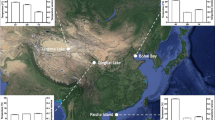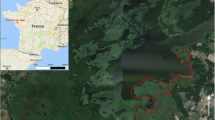Abstract
We investigated the fledging probability of oystercatcher, Haematopus ostralegus, chicks as a function of hatching order, brood size, territory quality and food availability. Sibling dominance was related to the hatching order in both low- (’leapfrogs’) and high-quality (’residents’) territories. Differences in hatchling mass might have aided the establishment of a dominance hierarchy, since breeders produced small late eggs and hatchlings. These mass differences were most pronounced in leapfrogs, and in large broods in years with lower food availability (’poor’ years). Late hatchlings fledged less often and with lower body masses compared to early hatchlings in all situations. Leapfrogs produced smaller broods and hatched their broods more asynchronously in poor years than leapfrogs breeding in years with more available food (’good’ years) and residents breeding in both poor and good years. Large brood sizes resulted in lower survival of hatchlings in poor years. These results favour the ’brood reduction’ hypothesis. However, contrary to the expectations of this hypothesis, hatching order also affected fledging success in residents. Moreover, large brood size resulted in higher survival of hatchlings in good years, particularly in residents. Thus, although large broods experienced losses due to sibling competition in some years, they nevertheless consistently produced more fledglings per brood in all years, both as leapfrogs and residents. We believe this effect is due to parental quality correlating with initial brood size. Most leapfrogs, at best, fledged one chick successfully each year, losing chicks due to starvation. Nevertheless, leapfrog broods were reduced in size after hatching significantly less quickly than resident broods. These results suggest that breeders lay and hatch insurance eggs to compensate for unpredictable losses due to the high predation rates on both nests (ca 50%) and chicks (ca 90%), in accordance with the ’nest failure’ hypothesis.
Similar content being viewed by others
Author information
Authors and Affiliations
Additional information
Received: 14 February 2000 / Revised: 27 September 2000 / Accepted: 10 June 2000
Rights and permissions
About this article
Cite this article
Heg, D., van der Velde, M. Effects of territory quality, food availability and sibling competition on the fledging success of oystercatchers (Haematopus ostralegus). Behav Ecol Sociobiol 49, 157–169 (2001). https://doi.org/10.1007/s002650000279
Issue Date:
DOI: https://doi.org/10.1007/s002650000279




